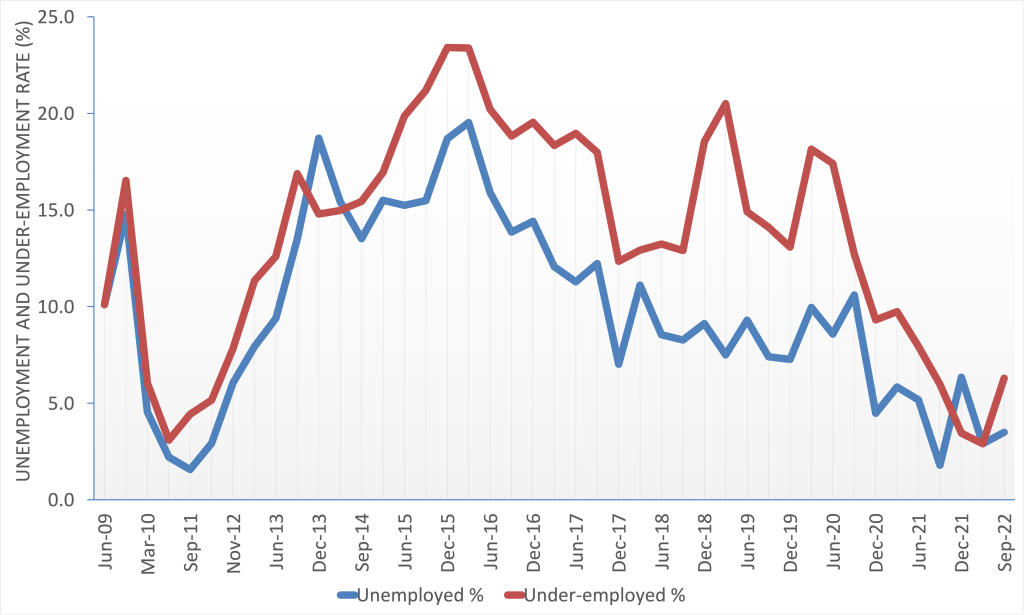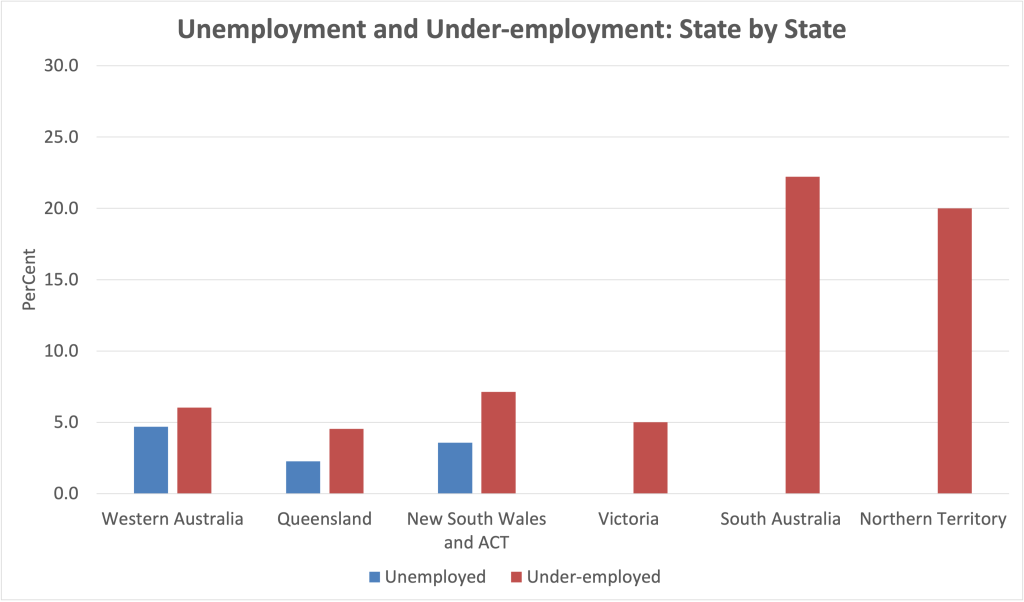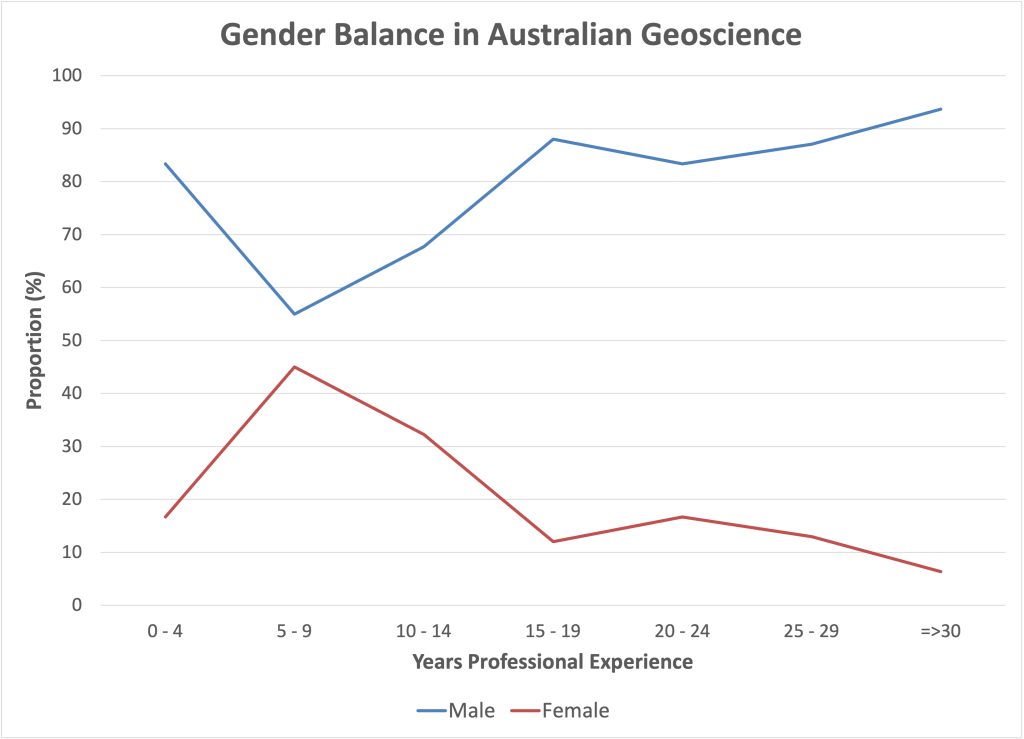The results of the latest quarterly snapshot of Australian geoscientist employment conducted by the Australian Institute of Geoscientists recorded a slight increase in both unemployment and underemployment (geoscientists able to secure less than one quarter of their desired workload) during the three months between July and September 2022.
The unemployment rate amongst geoscientists nationally was 3.5%. The under-employment rate was 6.3%. This compares with unemployment and under-employment rates at the end of March 2022 which were both 2.9%. There was no survey at the end of June 2022.

Australian geoscientist employment and under-employment June 2009 – September 2022
The latest results continue a general downward trend in unemployment and under-employment rates evident since March 2016. The unemployment rate was the sixth lowest recorded since this survey series commenced in June 2009.
Results varied markedly between states. No survey respondents from Victoria, South Australia and the Northern Territory reported being unemployed. The under-employment rates in Victoria, South Australia and the Northern Territory were 5.0%, 22% and 20% respectively.
Queensland recorded an unemployment rate of 2.3% for the quarter, followed by New South Wales at 3.6% and Western Australia at 4.5%.
The corresponding under-employment rates were 4.5% for Queensland, 6.0% for Western Australia and 7.1% for New South Wales.
Too few responses were received from Tasmania to enable rates to be stated with any confidence.

Geoscientist unemployment and underemployment rates by state – Q3 2022
Some 339 responses were received to the survey, representing around 6% of an estimated 6,000 professional geoscientists currently working or seeking work in Australia.
The survey recorded a decrease in long term unemployment, with 36% of survey respondents reported not having worked as geoscientists for more than 12 months. This figure remains high but is lower than that recorded in previous surveys.
Some 68% of respondents reported being employed full time, 2.7% part time and 4.7% on a casual basis. Some 25% of respondents were self-employed contractors and consultants, which represents a significant increase on previous surveys.
Junior exploration and mining companies were the leading source of employment opportunities, employing 33% of respondents. Major and mid-tier mining and exploration companies accounted for 14% and 15% of employment opportunities respectively. Public sector employers accounted for only 6.2% of geoscientist employment opportunities.
The ageing of Australia’s geoscience professionals is of increasing concern with more than 41% of respondents reporting having more than 30 years’ experience, putting them within 15 years of retirement. Early career geoscientists (less than five year’s experience) accounted for only 6% of survey respondents.
Gender imbalance remains a feature of our profession, with 85% of survey responses received from men and only 15% from women overall. When broken down into years of professional experience, the highest proportion of women in geoscience is amongst geoscientists with 5-9 years’ experience, where the rate peaks at 45%. The proportion of women in Australian geoscience declines as years of experience increases, except for a small increase in the range of 20-24 years’ experience, potentially attributable to women re-entering the profession.

Gender balance vs years of professional experience in Australian geoscience.
The major concern in the chart is amongst early career geoscientists (0-4 years’ experience) where the survey results show very few women taking up geoscience as a career in recent times and pursuit of geoscience careers by women only slightly lower than the overall average rate of 85%. This data challenges a frequently quoted perception that women enter geoscience as a profession but do not remain in the profession long-term (i.e. for more than ten years), instead suggesting that women have not been taking up geoscience as a career for the past five years. The data could be a product of early career professionals not responding to the survey or engaging in professional activities and development opportunities provided by Australia’s professional institutes and learned societies, but this does not appear to be supported by survey contribution rates. Either way, the process of improving gender equity seen as a priority by our profession may be considerably more difficult than currently perceived.
The December quarter survey will open for contributions early, in the third week of December, and will remain open until mid-January 2023.
Andrew Waltho FAIG RPGeo